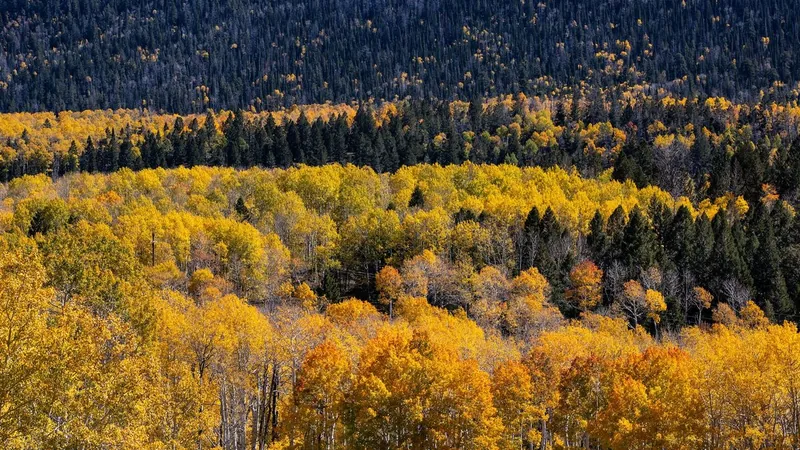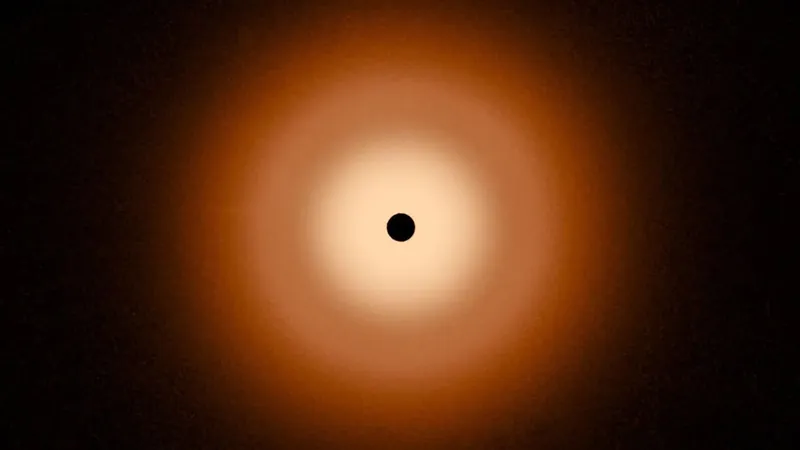
Incredible Discovery: World's Largest Organism Pando Could Be Over 80,000 Years Old!
2024-11-12
Author: Sarah
Incredible Discovery: World's Largest Organism Pando Could Be Over 80,000 Years Old!
A recent study has landed Pando, the colossal quaking aspen grove in Utah, in the spotlight as not just the largest known organism on Earth, but potentially one of the oldest, dating back between 16,000 and 80,000 years. This astonishing revelation marks a significant advancement in our understanding of this extraordinary living entity, challenging previous notions about age and resilience in plant life.
What is Pando?
Pando — which translates to "I spread" in Latin — covers a vast area of more than 100 acres (40 hectares) and has produced around 47,000 genetically identical stems, all interconnected by an extensive underground root system. This uniqueness places Pando not only as the largest tree but also makes it the heaviest living organism on our planet.
The Study's Findings
The study, led by Rozenn Pineau and published on bioRxiv, estimates Pando's age through analyzing genetic mutation rates in the aspen's genome. Interestingly, pollen samples from a lakebed near Pando reveal that aspen trees have thrived in the region for over 60,000 years — an indication that this vast clonal structure might have existed concurrently with early human migrations out of Africa.
Complexity in Age Assessment
Furthermore, the assessment of Pando's age has been complex due to its rare genetic mutations. While the range provided seems wide, Pineau explains that such variability stems from the unpredictable nature of mutation accumulation in new growth, suggesting ongoing studies will aim to refine this information further.
Expert Opinions
Paul Rogers, director of the Western Aspen Alliance, expressed optimism regarding the findings but noted a personal suspicion that Pando might be closer to 16,000 years than 80,000, given climatic conditions that could have posed threats to its survival during the last glacial maximum. The current lack of ancient DNA evidence makes it difficult to ascertain if the pollen specifically belonged to Pando or a surrounding area's aspen population.
Conservation Efforts
In a turn of good fortunes for Pando, regeneration has been encouraged through fencing off sections to curb the impact of overgrazing by deer and cattle. Conservation strategies combined with a recent stretch of wetter years appear to be fostering a resurgence in the grove's growth, raising hope for its continued survival.
Conclusion
As researchers continue to unravel the mysteries of Pando, its ancient lineage offers valuable insights not only into plant biology but also into biodiversity and ecological resilience against environmental changes. Could this living relic hold keys to understanding how other species might adapt and thrive in the face of climate shifts? The journey to uncover Pando's secrets may just be beginning.



 Brasil (PT)
Brasil (PT)
 Canada (EN)
Canada (EN)
 Chile (ES)
Chile (ES)
 España (ES)
España (ES)
 France (FR)
France (FR)
 Hong Kong (EN)
Hong Kong (EN)
 Italia (IT)
Italia (IT)
 日本 (JA)
日本 (JA)
 Magyarország (HU)
Magyarország (HU)
 Norge (NO)
Norge (NO)
 Polska (PL)
Polska (PL)
 Schweiz (DE)
Schweiz (DE)
 Singapore (EN)
Singapore (EN)
 Sverige (SV)
Sverige (SV)
 Suomi (FI)
Suomi (FI)
 Türkiye (TR)
Türkiye (TR)